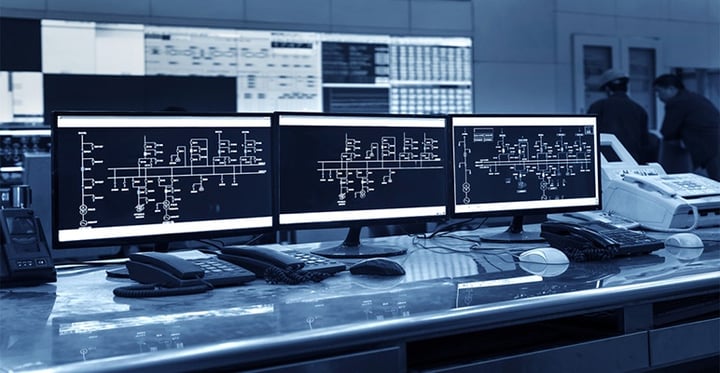Big Data & AI Are Changing Everything About Your Commercial Building’s Systems
Although we have to admit not all the incredible predictions that futurists from the early 20th century made about our own time have come true, some pretty impressive technological advances have come to pass.
For instance, forward-thinking scientists foretold that computers would be integrated into the systems and appliances running our homes and commercial buildings. And while most existing homes and buildings still don’t incorporate all of the automated and computer-controlled elements futurists assumed they would, many of those incredible features not only exist, but have become common.
The 21st century commercial HVAC system
A perfect example of this technological evolution is in the HVAC system that heats, cools, and ventilates the average commercial building.
For most of its history, commercial HVAC was made up of the same equipment (thermostats, heaters and air conditioners) used in our homes, but on a larger scale. Today, however, technological advancements are changing commercial HVAC in many ways:
- Computing power and speed continues to evolve
- Electronic components are shrinking and becoming more powerful
- Sensor technology is becoming more affordable
- Data collection, storage, and analysis are faster and cheaper than ever before
Lower cost and increased sophistication
As a result of these advancements, modern commercial HVAC systems have evolved into interconnected networks of sensors, hardware, and software that can be calibrated to offer maximum comfort and optimal energy efficiency under all operating conditions. And, this level of sophistication no longer costs what it once did because the bulk of the power comes from the data and the software, not the hardware (which is far more expensive to replace or upgrade.)

As a result, even average hardware can be upgraded and improved through quick and simple software updates instead of demanding expensive and time-consuming replacements or repairs. This has extended the effective lifespan of commercial HVAC equipment along with all the other benefits of tech improvements.
Improved performance and convenience through automation
Facility maintenance technicians no longer need to spend hours manually calibrating and optimizing the HVAC system, since more convenient — and more effective — smart building automation has become available.
A commercial HVAC system that is increasingly automated and autonomous can rely on embedded machine learning algorithms to continually review and analyze the data it collects to optimize the system in real time. Smart building automation improves energy efficiency, lowers operating costs, and boosts the operation of the entire system.
Faster implementation and learning curve
Smart building automation and machine learning software can also make the training of new technicians and energy engineers faster and more effective because the software is not limited by the human operator’s experience, knowledge or skill level.
In the case of modern commercial HVAC systems, the seeming science fiction of the past truly is the reality of today.
What does this really mean for you?
Beyond taking a fun and exciting look back at how far technology has come, there’s a much more important reason to think about the impact of Big Data, AI, and evolving technologies on your commercial building’s systems:
If you’re responsible for a commercial facility, you need to ask yourself: how much of this amazing technology is already incorporated into our building? How well are we taking advantage of the technology’s incredible possibilities?
Improvements can be made in nearly every commercial building. Did you know that experts believe human beings never even look at 90 percent of the data that’s constantly being collected? If your building has control sensors and analytics software, who’s looking at the data those sensors are collecting? You’d likely be surprised how inexpensive and simple it is to get more out of that data. Or, if your building isn’t equipped yet, to finally start collecting and analyzing it in the first place.
In short, there’s no better time than right now to consider your commercial HVAC system and optimize it for performance and efficiency, using the power of Big Data, AI, and smart building automation technology. If you need any help making this happen for your commercial building in Colorado, Arizona or Virginia, let our commercial HVAC company discuss your options with you.

